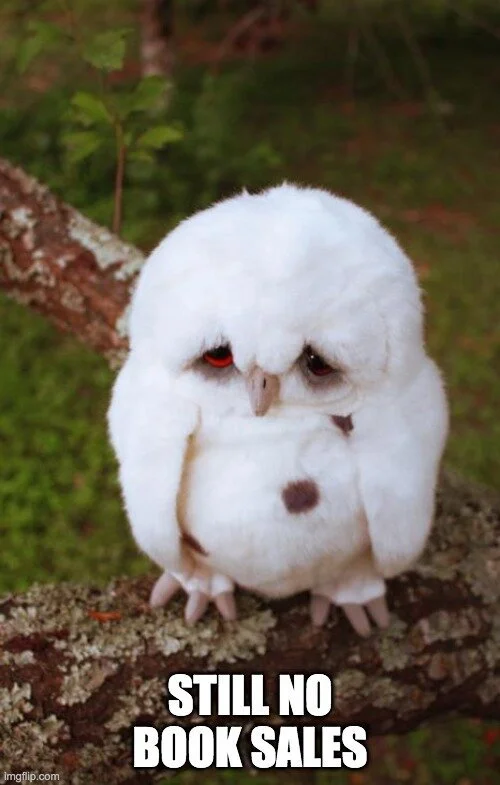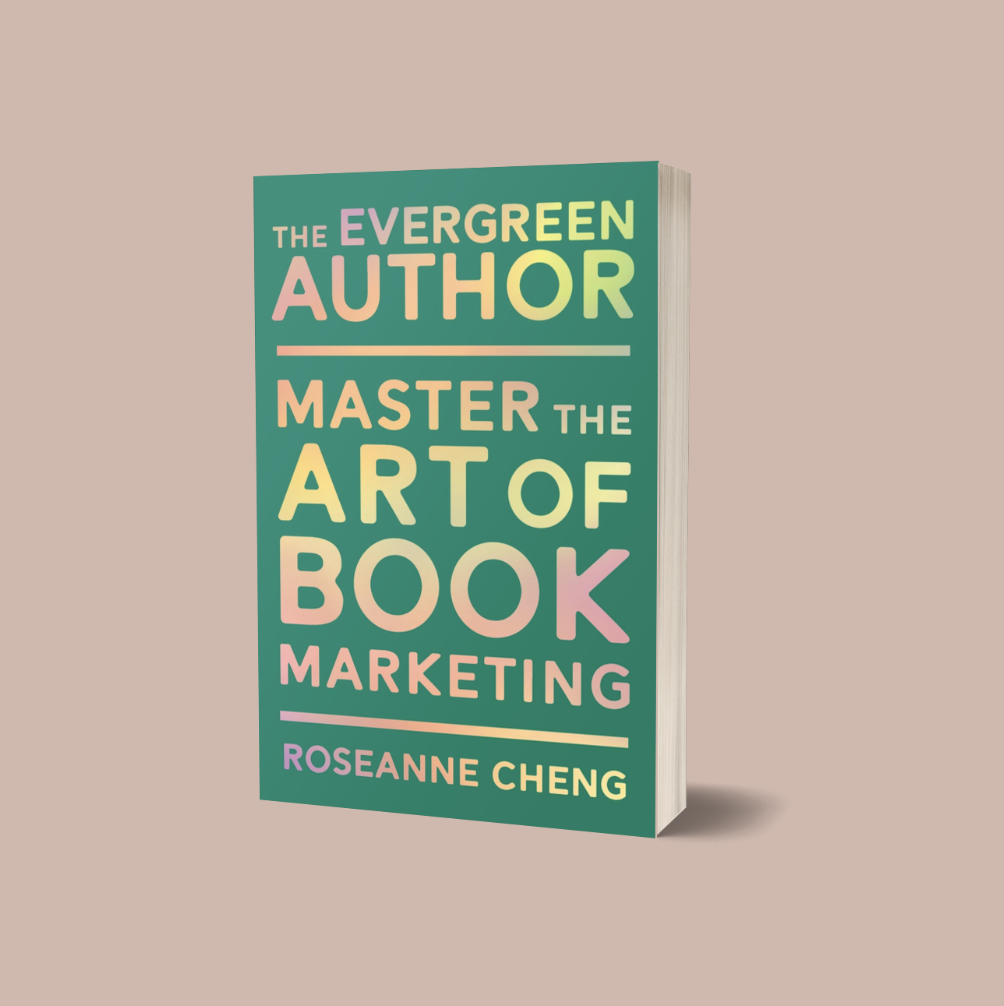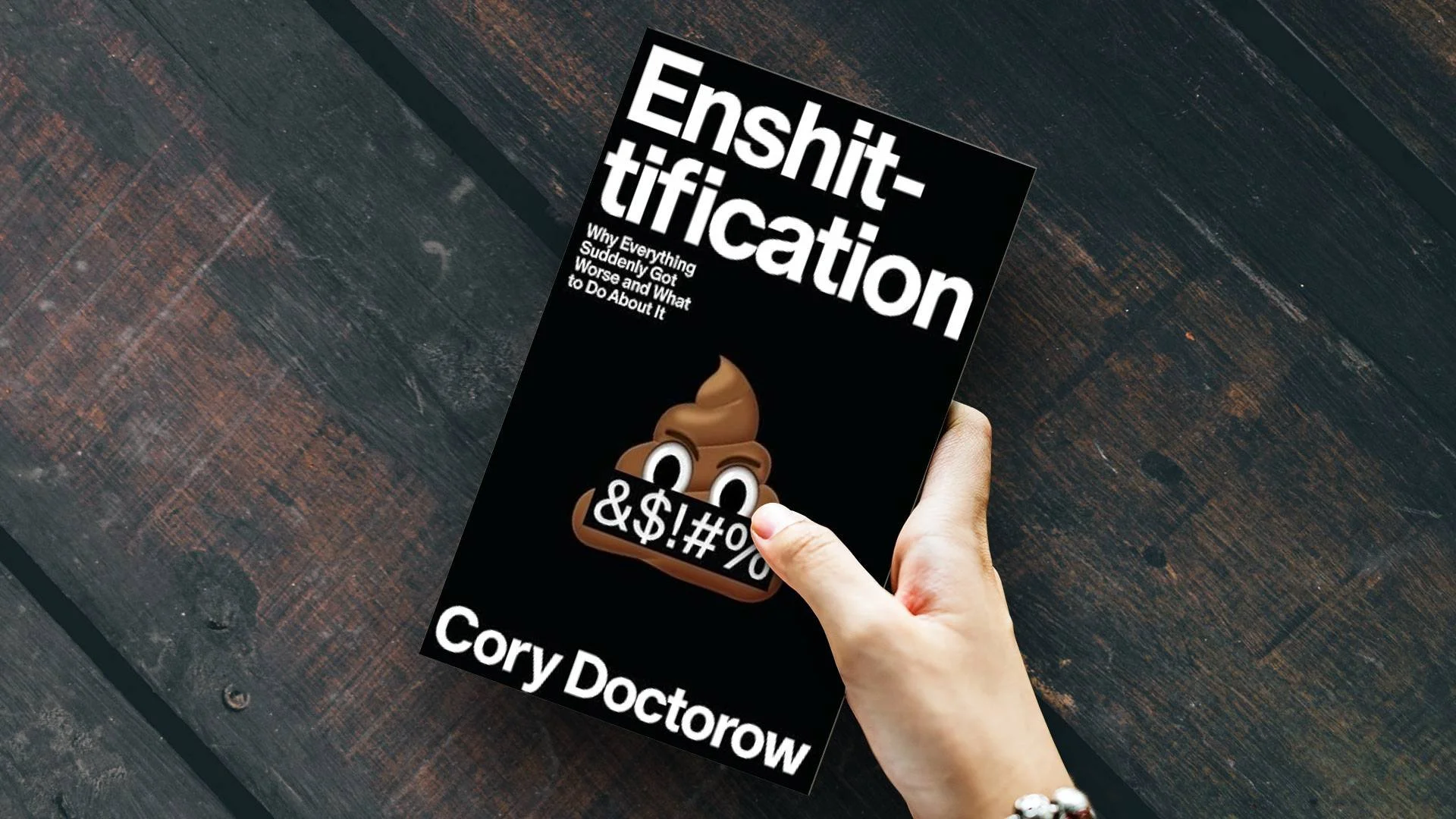5 Simple Marketing Strategies to Revive Stalled Book Sales
Dear Evergreen Authors:
When is the best month to release my book?
My book sales are stalled right now—is this normal?
What do I do during the times when I just don’t make any book sales?
These are some of the questions we get during what we call “cricket season”, or the months when book sales seem pretty flat for many authors.
Writers, times when your book doesn’t seem to move, no matter how many ads you run and how many emails you send, are scary.
We get it.
First and foremost, we need everyone out there who is interested in a writing career for the long term to know one thing:
Sales cycles are real. Your book is no exception.
And, equally importantly:
Knowing and understanding your book sales cycle is the key to an evergreen author career.
If you’ve read our book, The Evergreen Author: Master the Art of Book Marketing, you know that creating a long term career as a writer means becoming a data scientist.
This means getting unemotional about the creative process and letting the DATA point you in the right direction.
And guess what?
That data is going to look different for every author.
We have worked with authors over the years whose minds are totally blown away by this knowledge.
They have bought into some antiquated idea that books should be published in a certain month, promoted in a certain month, and that’s just the way it’s always been.
Ever stopped to think about this for a moment?
Let’s take a self-help author for example: her best time to launch and promote her book is probably in January, when we’re all in “New Year, New Me!” mode.
Let’s take a cookbook author, who writes recipes for busy moms. Her best time to launch and promote her book is in May, when everyone’s focus is on Mother’s Day.
Let’s take an author who writes books for teachers and educators. Her best time to launch and promote her book is probably in August, when “Back to School” is on every headline and billboard.
In this day and age, there’s no “right” time to publish your book. You could launch your book today, assuming it’s finished. Hooray!
After that, though, smart authors put on their lab coats and become scientific about how they approach the year after their book comes out.
(Yes, a year. We suggest getting an entire year’s worth of data before determining what your sales cycle really is.)
Smart authors don’t attach to a certain outcome. Smart authors conserve their energy and remain unemotional as they see what the data tells them.
We get that this can feel like disheartening news. An entire year feels like a long time to be in “wait and see” mode. But we would never suggest you just sit back and twiddle your thumbs for a year.
If you’re looking for constructive ways to use the times when sales seem to feel “stale”, we have a few strategies:
1) Focus on Your Creative Connections
If you find yourself needing to revive your book sales, you have an amazing opportunity to establish and re-establish some creative connections, all for free!
Check out your local libraries to see how you can request they carry your book. Already featured in your local libraries? Expand your search to libraries beyond your county and state.
Look through some of your older emails and remind yourself of all the people in the writing community you might have said “we should get together sometime soon”, but never did. Email your editor, your designer, your publisher, and ask how things are going. Take some time to send thank you notes to those who have encouraged you on your author journey.
Get social on social media. Don’t worry about creating content that sells your book– make authentic connections with other writers, readers, and book people who inspire you. Comment on people’s posts, share people’s books, and find groups of writers who might struggle with the same challenges you do.
Your creative partnerships cost nothing, and can be some of the most valuable assets to your marketing. A sales downturn is a great opportunity to re-establish and create new connections, all with no pressure or expectation.
2) Advertise Where Your Readers are Hanging Out
We are willing to bet that your audience is hanging out (i.e. searching for books) on Amazon—that hasn’t stopped or slowed down as a result of the pandemic. So yes, you should be advertising on Amazon.
We highly recommend watching our free workshop about how to successfully use Amazon advertising to sell your book.
Watch Now: How to Promote Your Book With Amazon Advertising
Now is a great time to step back and think about where else you might be putting your ad dollars.
Is your audience still on Facebook? Are you sure about that?
Podcasts?
If you have typically taken out an ad at a festival or writer’s conference, what is the attendance and/or reach?
The smartest writers remain flexible and stay focused on the bigger picture.
A shift in priorities doesn’t mean giving up on opportunities altogether. It just means that you’re being conscientious of working with what is instead of what you hope would be.
3) Re-Evaluate Your Social Media Strategy
We’re seeing a lot of authors still in the early 2000’s mindset when it comes to social media.
Positivity!
Perfect pictures!
10,000 hashtags!
The word “authenticity” is thrown around a lot, but there’s no other way to say it: if you want to resonate with people, you’re going to have to be authentic, whatever that means to you.
However you communicate with your audience, choose one to two platforms—that you genuinely enjoy using yourself—to create content on and connect with readers.
Read More: The Ultimate Guide to Social Media Marketing for Writers
4) Update Your Author Website
Now is a great time to take a bird’s eye view of your website and make sure that it’s still reflecting you and your work.
We’ve noticed that smart authors have used their downtimes to make video content for their websites and really SEO-rich blog posts that drive traffic to their books.
No matter what website platform you choose, the overall design of your site is critically important.
In addition to making sure that it is easy to navigate and has a clean look, you should consider how readers will interact with it.
For example:
How many pages do you have?
Are the pages easy to click on and navigate through?
Do your posts have an appropriate length/amount of content/visuals given the format you’ve chosen?
What kind of content do those posts contain (text only or with images/videos as well)? And for those with videos, what would be the ideal video length?
This might seem obvious: have a nice-looking website!
But the truth is that many authors struggle with this because they might not have any experience with visual web design.
If this feels overwhelming to you, don’t worry. Here are a few suggestions to help make and keep your author blog visually appealing:
Hire a professional. Use a website like Reedsy to help you find people, programs, and templates that will help make your website or other blogging platform visually appealing.
Less can be more. When it comes to your writer’s blog, you want to focus on quality over quantity. Don’t worry about creating hundreds of posts. Focus on creating a few really stellar blog posts that will stand the test of time.
Look to a wide variety of creators for inspiration. Poets, visual artists, filmmakers, literally anyone with an online blogging presence can be a source of inspiration for you. The best part is that there’s virtually no risk to trying out different tactics on your author blog. You’ll know by checking your web analytics which posts are resonating with readers. Once you have that data, you’ll know what to keep doing and what to let go.
Don’t overthink this too much—spend some time looking at your favorite authors’ websites for inspiration.
5) Create New Content
Don’t freak out—we’re not suggesting you write another book (unless you want to.)
New content can be anything from a simple blog post to a video series on YouTube.
Maybe you could hire an illustrator to create some new graphics for your website.
Maybe you could create a lesson plan for your book and sell it on Teachers Pay Teachers.
Maybe you could host a Facebook live event, if your audience is still there.
Maybe you create a new business profile on LinkedIn where you share some of what you’ve learned in your author career.
We’ve spoken with many authors who’ve expressed trepidation when it comes to making plans for the future for their books.
What if things shut down again? Are people too Zoom-fatigued to do another online event? What is going to happen to the social media platforms we’ve always used?
The truth is, we don’t know.
We’re authors, too, and are walking this new reality right along with you.
One thing we cover in The Evergreen Author: Master the Art of Book Marketing is the importance of staying unemotional and flexible as you figure out the marketing plan that works for you.
For us, this means that in our brave new modern world authors need to remain hyper conscious of where they’re spending their time and money on book marketing, and really listening to their audience.
In other words, take this opportunity to re-assess and maybe even re-invent your author platform. Don’t be afraid to take calculated risks, and remain flexible with what the data tells you.
Authors, we hate to break it to you, but it’s true: You’re going to run into hard times, whether it be a poorly attended book event, a disappointing ad campaign, or, yes, an economic recession.
The way we see it, you have two choices:
Sink into a pit of despair and give up all hope of success.
Ride the wave and see where it takes you.
We sincerely hope you’ll choose the latter.
Creative work is hard, and there are many factors that are simply out of your control. That’s all the more reason for you to stay focused, and yes, hopeful.
Your readers will thank you for it!




